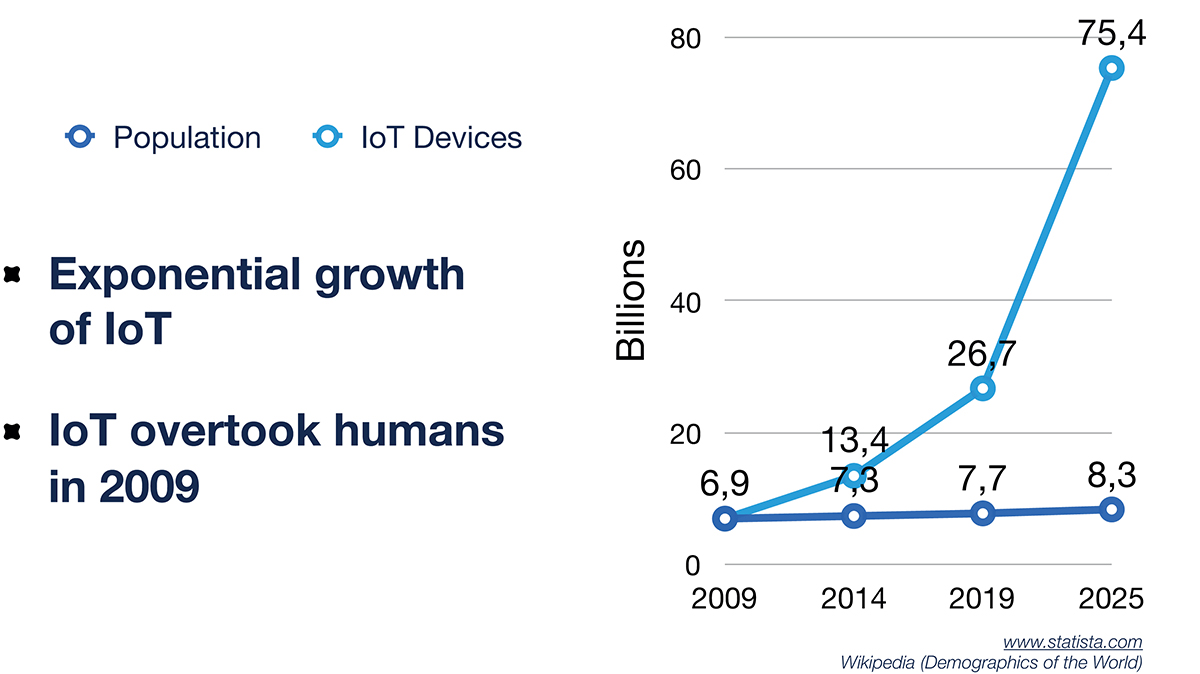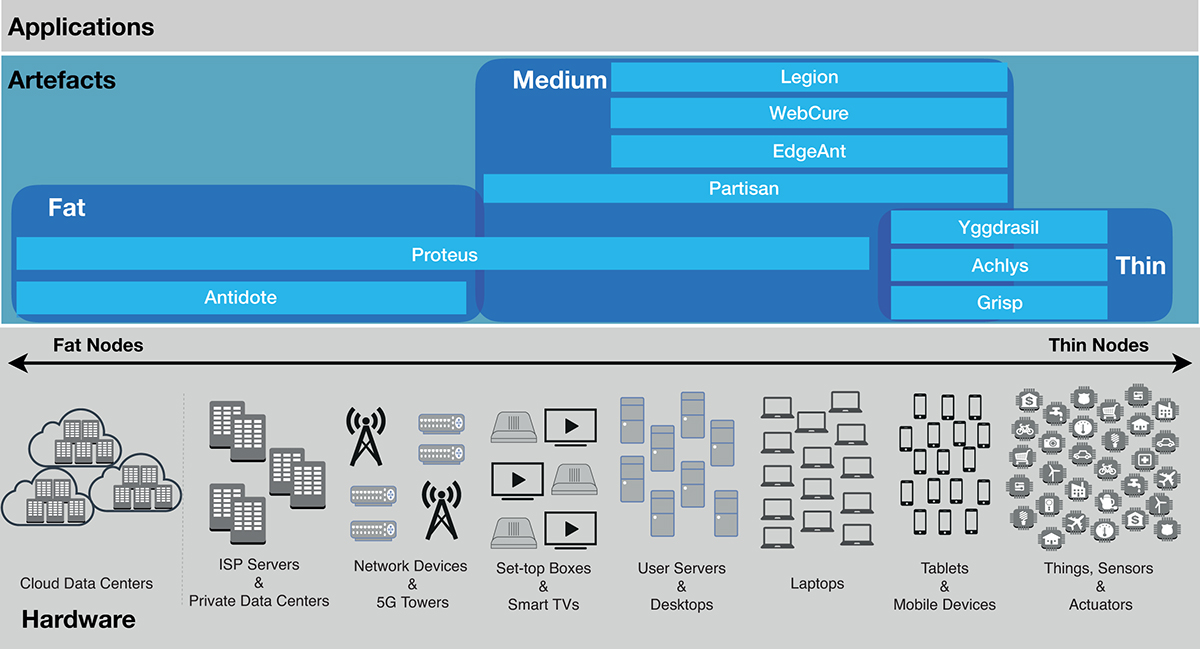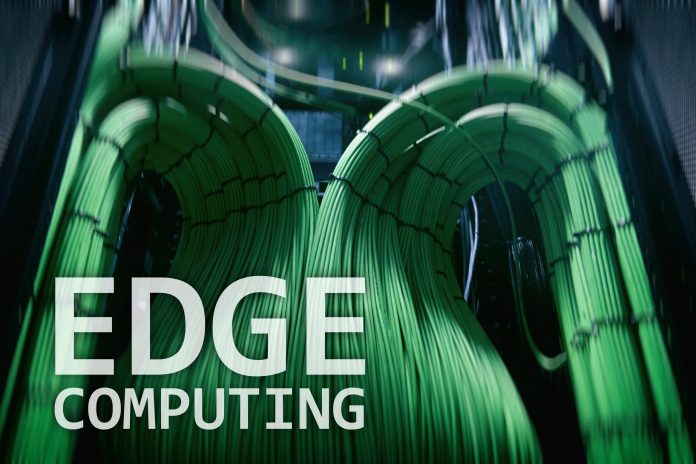Professor Peter Van Roy, Université catholique de Louvain, discusses how LightKone, a European H2020 project, will help build the future of edge computing
The edge of the Internet consists of the heterogeneous, loosely coupled devices situated at the logical extreme of the Internet, farthest away from the data centers. Edge devices are diverse, including mobile phones and tablets as well as sensors and actuators that interface with the real world. Collectively they form the Internet of Things (IoT). The number of IoT devices is growing exponentially, and this is projected to continue for at least another decade. Ultimately there will be hundreds of devices connected to the Internet for every human being on Earth. Managing this fast-growing infrastructure is a major challenge that is being addressed by industry and academia.
Globally dominating companies in the IT sector are working hard to enable edge computing. Examples of cloud frameworks extended towards the edge are Microsoft Azure IoT, Amazon IoT Greengrass, and Google Firebase. Other companies have created consortia and defined edge computing architectures. One of the major consortia is the Industrial Internet Consortium, which has recently absorbed the OpenFog Consortium. The Industrial Internet of Things Volume G1: Reference Architecture (IIRA) defines a spectrum from cloud to sensor devices and a service-oriented approach for building applications on this spectrum, based on a layered structure with node-level services (network, compute, storage, etc.) on the bottom and application support services on top. However, in the fast-evolving world of edge infrastructures, the IIRA leaves many important aspects underspecified, such as the problems of data management, heterogeneity, security, multiple stakeholders, and so forth. The LightKone project addresses these aspects.

The LightKone project
LightKone is a European H2020 project focused on edge computing (see lightkone.eu). LightKone provides solutions for edge computing based on uniform data management for the full cloud-edge spectrum. We complement the IIRA with two principles of data management: convergent vertical data semantics (vertically covering the full cloud-edge spectrum) and decentralised lateral data sharing (laterally across devices at each level of the spectrum). We integrate both principles into our application frameworks and we present realistic industrial use cases to show how this works in practice. The solutions are part of the LightKone Reference Architecture (LiRA), presented in a whitepaper that is available on the LightKone website.
Existing edge computing architectures such as IIRA define a standard architecture for edge applications: edge sensors generate data, which is then aggregated at intermediate gateways, and finally sent to the cloud to be analysed. Analysis results are sent back to the gateways and forwarded to edge actuators. This approach is successful because it builds on existing cloud infrastructures. But it also has fundamental problems. There are many links in the chain between edge and cloud, which increases cost, delay, and fragility, and makes security and privacy harder to achieve. Furthermore, the exponential growth of IoT devices makes the approach harder to maintain for future applications, because clouds are not growing as fast as the edge.

LightKone’s flexible data-oriented approach lets it support another architecture for edge applications that does not depend on the cloud. We call the cloudless approach light edge. Light edge is becoming practical because of the growing computation power and storage outside of the cloud, and it is becoming more important because of the exponential growth of IoT devices. Light edge has technical advantages such as lower cost, lower delay, improved maintainability, local decision-making ability, and improved security and privacy. This is especially useful for IoT applications that do large computations such as data fusion, machine learning, and analytics.
Data-oriented edge computing with LiRA
The LightKone Reference Architecture (LiRA) focuses on the data and not on the cloud. In LiRA, data is managed throughout the cloud-edge spectrum, and computation and storage can be done anywhere on this spectrum. It can be done in the cloud or in the intermediate gateways, to be compatible with existing edge architectures, or on the edge devices themselves with light edge, which is a new approach pioneered by LightKone. To enable the data-oriented approach, LiRA has developed a new technology for data consistency that supports loosely coupled, highly dynamic, heterogeneous networks. We base data consistency on the concept of convergent data and its realisation in convergent data structures called CRDTs (Conflict-free Replicated Data Types). Data storage based on CRDTs will always converge to the correct value, despite network and device failures and irregularities. This is guaranteed mathematically by design. CRDTs were invented in 2011 by LightKone project partners, and they are being used by a growing number of companies to manage their data.
LightKone takes CRDT technology out of the database and pushes it towards the edge. Based on CRDTs and related technologies, we developed tools for both traditional and light edge architectures:
Antidote. Antidote is a high-performance causally consistent transactional database that extends from the cloud to the edge. Antidote supports geo-replicated applications covering both cloud and edge transparently.
Achlys. Achlys is a framework for building applications on sensor networks. Our current implementation supports applications written for Grisp boards. Applications written in Achlys run reliably even if the individual boards and the communication network are dynamic and unreliable.
Grisp. Grisp embedded system boards were developed by LightKone partner Stritzinger GmbH, to provide off-the-shelf high-level prototyping support for IoT applications using standard Pmod sensors. Grisp boards host the Achlys framework, but they can also be used directly for edge applications.
Legion. Legion focuses on Web clients, such as mobile phone applications, and supports data sharing and communication in peer-to-peer fashion. Application clients written in Legion access shared objects replicated directly at the clients.
The LiRA whitepaper presents five industrial use cases developed by LightKone industrial partners that show how the data-oriented approach works in practice. These use cases cover massive cloud-centric storage and search, distributed monitoring of large user networks, automated transport for manufacturing, and autonomous precision agriculture. We invite you to take a look and see how LightKone’s data-oriented approach can simplify edge computing.
Please note: This is a commercial profile











